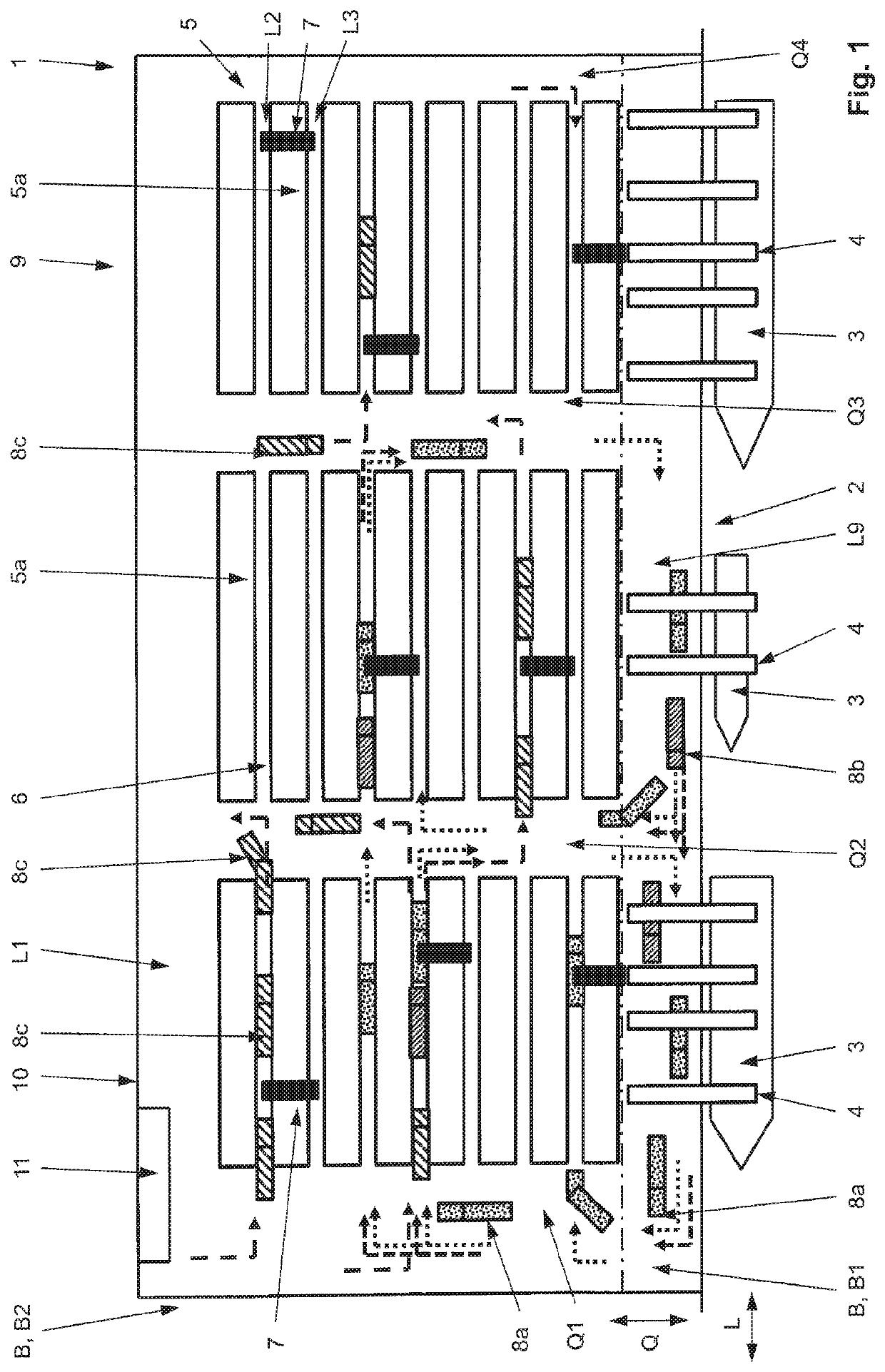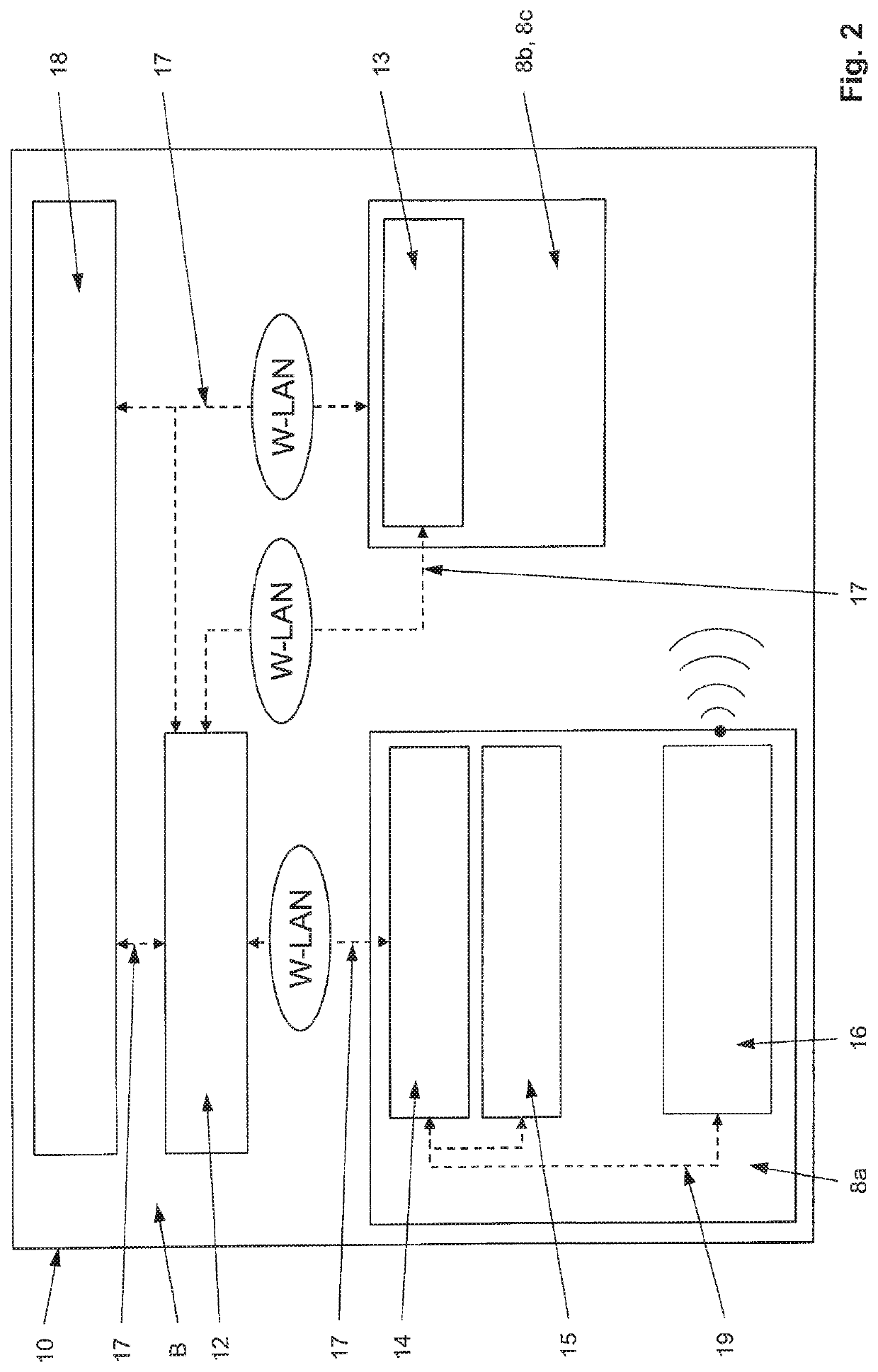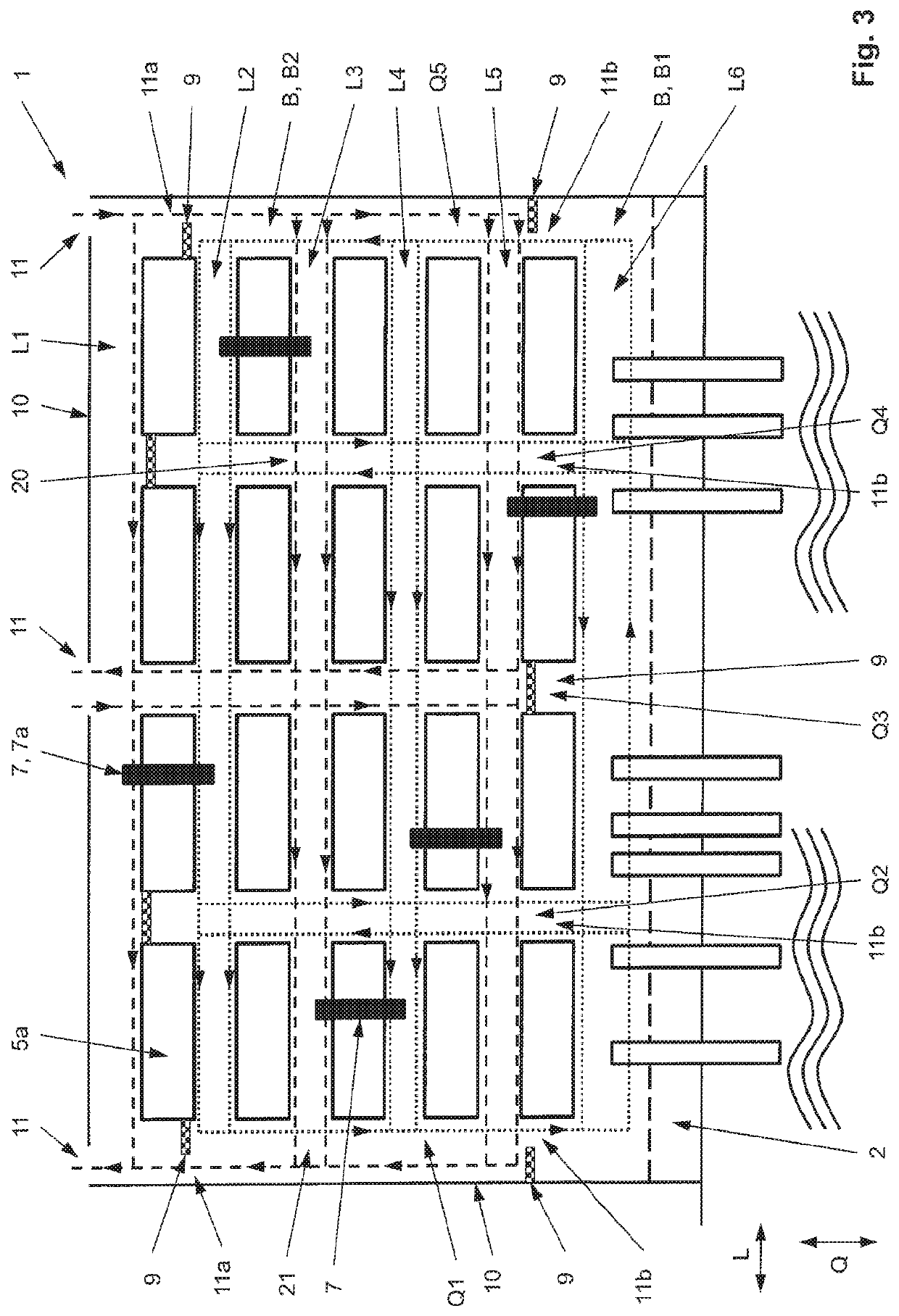System for transporting containers using automated and manually driven heavy goods vehicles
a technology for heavy goods and automatic driving, applied in the direction of vehicle position/course/altitude control, process and machine control, instruments, etc., can solve the problems of inability to combine traffic or mix traffic by internal automatic guided heavy-duty vehicles with external manually guided heavy-duty vehicles, and achieve the effect of particularly safe and cost-effective operation
- Summary
- Abstract
- Description
- Claims
- Application Information
AI Technical Summary
Benefits of technology
Problems solved by technology
Method used
Image
Examples
Embodiment Construction
[0031]In FIG. 1, a schematic view of a container terminal 1, which is formed as a port terminal, is shown in plan view. Here, a number of ships 3 can dock at a quay 2 of a harbor, in order to deliver or pick up containers. Provided on the quay 2 for loading or unloading the ships 3 are container bridges 4, which are also referred to as ship-to-shore cranes and the booms of which extend on the one hand over the ships 3 and on the other hand over the quay 2. Alternatively, the loading and unloading of the ships 3 may also take place by means of so-called harbor cranes, the booms of which are thereby swiveled over the corresponding ship 3 about a vertical axis. Both the container bridges 4 and the harbor cranes represent so-called handling devices.
[0032]The container terminal 1 is surrounded by a delimitation 10 and in this way is separated from its external surroundings and from the public traffic outside the container terminal 1. Moreover, the container terminal comprises within the ...
PUM
 Login to View More
Login to View More Abstract
Description
Claims
Application Information
 Login to View More
Login to View More - R&D
- Intellectual Property
- Life Sciences
- Materials
- Tech Scout
- Unparalleled Data Quality
- Higher Quality Content
- 60% Fewer Hallucinations
Browse by: Latest US Patents, China's latest patents, Technical Efficacy Thesaurus, Application Domain, Technology Topic, Popular Technical Reports.
© 2025 PatSnap. All rights reserved.Legal|Privacy policy|Modern Slavery Act Transparency Statement|Sitemap|About US| Contact US: help@patsnap.com



